A Latino Thanksgiving: Time to Party. The not-so-traditional way to give thanks
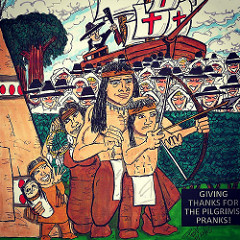 Thanksgiving (TG) is called “El Día de Acción Gracias” in Spanish, and IT IS celebrated by most Spanish Speaking families who live in the U.S.
Thanksgiving (TG) is called “El Día de Acción Gracias” in Spanish, and IT IS celebrated by most Spanish Speaking families who live in the U.S.
Although it features many traditional offerings of a European TG, it’s also got hot sauce, tequila, dancing, and rice that makes it super a super-charged Latino day of thanks. (Diclaimer: Again, by TG I mean Thanksgiving and not T-girl. Yes! I can read your mind!) 🙂
There’s no need for a history lesson but the American holiday began in Plymouth colony with the Pilgrims after their first harvest in the “New World” in 1621. They joined the Wampanoag Indian tribe for one lovely feast before slaughtering them the following year, putting leaders’ heads on poles, and selling them into slavery. But let’s not focus on such matters, or else we’ll lose our appetites!
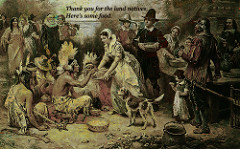 So, it’s a European-born holiday, but that doesn’t mean it can’t be celebrated by those whose skin’s not white. Be mindful that not everyone celebrates though.
So, it’s a European-born holiday, but that doesn’t mean it can’t be celebrated by those whose skin’s not white. Be mindful that not everyone celebrates though.
Jehovah’s Witnesses don’t celebrate Thanksgiving, but they don’t celebrate Christmas either nor Halloween. They don’t believe in souls, so, it kinda makes sense.
We can link Latinos celebrating TG due to cultural assimilation. This occurs when members of a cultural group adopt the language, practices, and beliefs of another group, while often losing aspects of their traditional culture in the process. But having a day of food and festival is ok, as long as no heads on poles are involved. I think most people can agree on that.
While some recent immigrants might not celebrate it off the bat, eventually they might once time has passed, and they learn about the meaning behind the holiday. Then expect them to add their own cultural elements.
TG is typically a day off from work where people get together, give thanks, and stuff themselves full of food. As the fattest country in the world, there’s no more of an American holiday than that.
Still, there’s nothing more universal than celebrating with food, family, thankfulness, and togetherness.
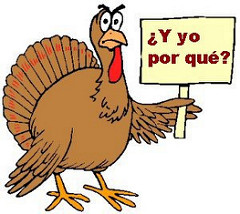 While most Americans stick to the classic turkey, potatoes, stuffing, rolls, and pumpkin pie, Latino cultures usually put a cultural spin on their foods.
While most Americans stick to the classic turkey, potatoes, stuffing, rolls, and pumpkin pie, Latino cultures usually put a cultural spin on their foods.
The Latino menu features turkey’s stuffed with chorizo or Spanish olives, carnitas, tamales, and flan.
Latinos are going to have some rice maybe yellow or Arroz con gandules and quite possibly an Arroz con leche for dessert.
Mexicans serve candied pumpkins or winter squash as dessert while Hispanic families serve deep-fried plantains as an appetizer. Puerto Ricans serve a coconut custard sprinkled with cinnamon for dessert and Lechon (suckling pig) is often the traditional meat choice.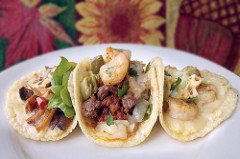
An interesting stuffing alternative is the Mofongo Stuffing (Green Plantain Turkey Stuffing). It’s got bacon, plantains, garlic and sweet chili peppers called Ajices. Yes, please.
And do you know what Elotes are? It’s found in the central and southern areas of Mexico and its corn on the cob typically served by street vendors that has mayonnaise and sprinkled with grated cotija cheese and hot chili powder. Never forget the hot sauce.
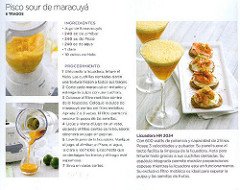 TG isn’t just a day for thanks. It’s a time to party. Don’t forget the copious amounts of alcohol enjoyed at a Latino TG. Expect tequila shots, pisco sours or gulps of Coquito. With drinking comes dancing so prepare for some Merengue, Salsa, and Reggaeton too.
TG isn’t just a day for thanks. It’s a time to party. Don’t forget the copious amounts of alcohol enjoyed at a Latino TG. Expect tequila shots, pisco sours or gulps of Coquito. With drinking comes dancing so prepare for some Merengue, Salsa, and Reggaeton too.
American’s tend to have more traditional gatherings, nothing too exciting, just getting together for a hefty meal. However, Latino thanksgivings are a bit more festive of an atmosphere. Think bachata music and dancing, while the family is the centerpiece of the happening celebration.
If you’d like to learn more about the cultural traditions of the Latino culture, hop on over to Kasa De Franko lessons page where you can take part in some exciting Spanish lessons tailored to fit your level and needs. There’s nothing better than bridging the gap between you and someone by being able to speak their language. At Kasa De Franko, we can show you how. And maybe do some partying too!
Don’t just speak Spanish! Think in Spanish!
Don’t just learn Spanish! Embrace the Spanish Culture!

